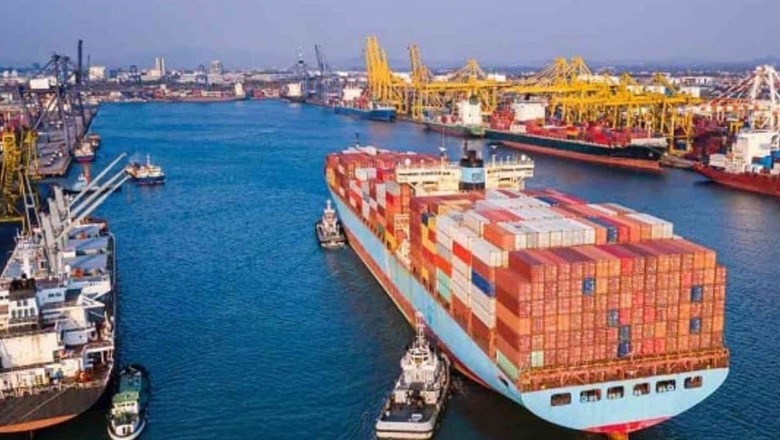
views
The emergence of drone technology has brought about a mix of exciting possibilities and new difficulties in various industries, including the world of commercial shipping. Drones, which are also known as Unmanned Aerial Vehicles (UAVs) or Unmanned Aircraft Systems (UAS), offer numerous advantages such as improved monitoring, enhanced data collection abilities, and greater logistical efficiency. However, they also come with potential challenges that could disrupt the smooth operations of commercial shipping.
In this comprehensive exploration, we will delve into the perils that drones can pose to the commercial shipping sector and explore the strategies for mitigating these risks.
Dangers to Commercial Shipping from Drones
Drones have the potential to create a range of hazards and challenges for commercial shipping. These dangers can be categorised into several key areas:
Early detection of these ships by pirates and gaining accurate intelligence
Drones equipped with cameras and sensors can capture sensitive information about shipping vessels, cargo, and crew members. This poses risks related to exact number of crew, their whereabouts and data security. Unauthorised access to such data can lead to accurate planning of piracy operations, choosing the time of attack of choosing of the pirates, or even potential threats to the security of the ships.
Collision Risks
Drones flying near commercial vessels can collide with the ship’s superstructure cargo (especially if it’s an inflammable cargo) and navigation and communication system, potentially causing damage. Collisions may result from drone operator errors, equipment malfunctions, or navigational issues on both the drone and the ship’s part. It can even be an intentional action by the pirates. However, given the level of intelligence of these pirates, it is hard to tell whether they will have accurate intelligence and drone flying skills to carry out such surgical operations against commercial ships.
Navigational Interference
Uncontrolled or rogue drones can interfere with the navigation systems of ships, posing a significant danger. Jamming signals, such as those used to interfere with the Global Positioning System (GPS) signals, can disrupt a ship’s ability to accurately determine its position, course, and speed. There have been cases in the past where the ship’s navigational signals have been spoofed and the ship was taken somewhere else.
Unauthorised Surveillance
Criminals or hostile entities can use drones for surveillance of commercial ships, their cargo, and activities. This unauthorised surveillance can lead to various risks, including the possibility of theft, piracy, or targeted attacks.
Contraband and Illicit Activities
Drones can be used to transport contraband, including drugs, weapons, or other illegal goods, to and from ships. Smugglers and criminals can exploit the versatility and stealth of drones to bypass traditional security measures.
Environmental and Safety Concerns
Malfunctioning or crashed drones can pose environmental hazards, especially if they carry hazardous materials or are powered by combustible fuels. Moreover, there’s a potential risk to human safety if drones collide with crew members or passengers onboard ships.
Unauthorised Cargo Dropping
Drones can be used to drop unauthorised cargo onto commercial vessels, potentially causing damage or posing security threats. This may include contraband, hazardous materials, or objects intended to disrupt ship operations.
Mitigation Measures for Dangers Posed by Drones
Addressing the dangers posed by drones to commercial shipping requires a multifaceted approach involving technology, regulations, and proactive security measures. Here are various mitigation strategies:
Regulation and Compliance
Establish and enforce comprehensive regulations for drone operation in proximity to commercial shipping. These regulations should address flight altitudes, no-fly zones, and appropriate licensing and training for drone operators. This needs to be an international initiative like the UNCLOS and needs to be strictly enforced.
Geofencing and No-Fly Zones
Implement geofencing technology to create no-fly zones around sensitive areas, such as ports and shipping lanes. Drones equipped with geofencing software will automatically avoid these restricted areas. This kind of dynamic geofencing is technologically challenging and cost-prohibitive. Will the shipping companies be willing to take it on remains a big question, given the fact that every aspect of the ship, including the lives of the crew is insured.
Remote Identification and Tracking
Require drones to be equipped with remote identification (RID) systems that provide real-time information about the drone’s operator, registration, and purpose. This helps authorities track and identify drones in the vicinity of commercial shipping. Given the law and order climate in Somalia (where most pirates originate from), this is a tall order.
Drone Detection Systems
Install drone detection systems on commercial vessels and at ports to detect and identify drones in the vicinity. These systems use radar, radio frequency (RF) detection, and other sensors to provide early warnings. This is the most promising solution as of today. Measures include passive listening to drone communication frequencies, active tracking using the triangulation method of the drone and the ground controller transmission stop and using artificial intelligence technology to triangulate based on the video and imagery of incoming drone.
Electronic Countermeasures
Deploy electronic countermeasures to disable or disrupt unauthorised drones. These countermeasures can include jamming devices to disable drone communication and control systems. Wide frequency jamming especially in the GSM band is very promising. Since power and weight are not major criteria on a commercial ship, high-power jammers and multidirectional jammers can be incorporated into the ship with great ease and with extremely good range and effectiveness.
Crew Training and Awareness
Train ship crews to recognise potential drone threats and respond appropriately. Crew members should know how to report drone sightings and follow established protocols for dealing with potential threats. This remains a major challenge as there are no institutions in the world that carry out such training, especially for the ship’s crew. However, there are organisations like Integrated Drone Training Academy that provide such preliminary courses for mitigating a drone attack using active electronic jamming.
Cybersecurity Measures
Implement robust cybersecurity measures to protect against data breaches from drone-based surveillance. This includes encrypting sensitive data, securing communication channels, and regularly updating security protocols. These measures would also include keeping secrets of commercial shipping, in terms of the number of crew, payload carried, and the route that will be taken by the ship.
Port Security and Inspection
Enhance security at ports and terminals to detect and prevent contraband carried by drones. This may involve increasing physical security measures, including surveillance cameras and personnel checks. As covered, expecting this from the Somalian government or governments of other small countries that are involved in piracy is a tall ask.
Multilateral Cooperation
Promote international cooperation to address drone-related risks to commercial shipping. Collaborative efforts between nations can help establish common regulations and share information on potential threats.
Research and Development
Invest in research and development to develop technology for detecting and mitigating drone threats. This includes developing more advanced drone detection and neutralisation systems. A lot of work in this direction has been carried out by many leading companies including companies in India. However, a ‘one-shop stop’ solution does not exist in the world though many claim they do.
Public Awareness Campaigns
Raise public awareness about responsible drone operation and the potential consequences of misuse. Encourage drone operators to follow regulations and avoid actions that could endanger commercial shipping. This is something that needs to be done on priority not only to counter the rogue drone attack on commercial shipping but also to counter dangers it poses against land assets such as high-value asset target systems, military installations, high-density population areas, railway and roadway network systems etc.
Conclusion
The emergence of drones has introduced both opportunities and risks to commercial shipping operations. While drones can enhance monitoring, data collection, and efficiency, they also pose various dangers, including privacy concerns, collision risks, navigational interference, and the potential for illicit activities. Mitigating these risks requires a combination of regulatory frameworks, technology adoption, security measures, and international cooperation. As the use of drones continues to evolve, commercial shipping stakeholders must remain vigilant and proactive in addressing the challenges posed by this disruptive technology. Through collaboration and innovation, the maritime industry can navigate these challenges while harnessing the benefits that drones offer to modern shipping operations.
Group Capt MJ Augustine Vinod VSM (retd) tweets at @mjavinod. Views expressed in the above piece are personal and solely that of the author. They do not necessarily reflect News18’s views.




















Comments
0 comment